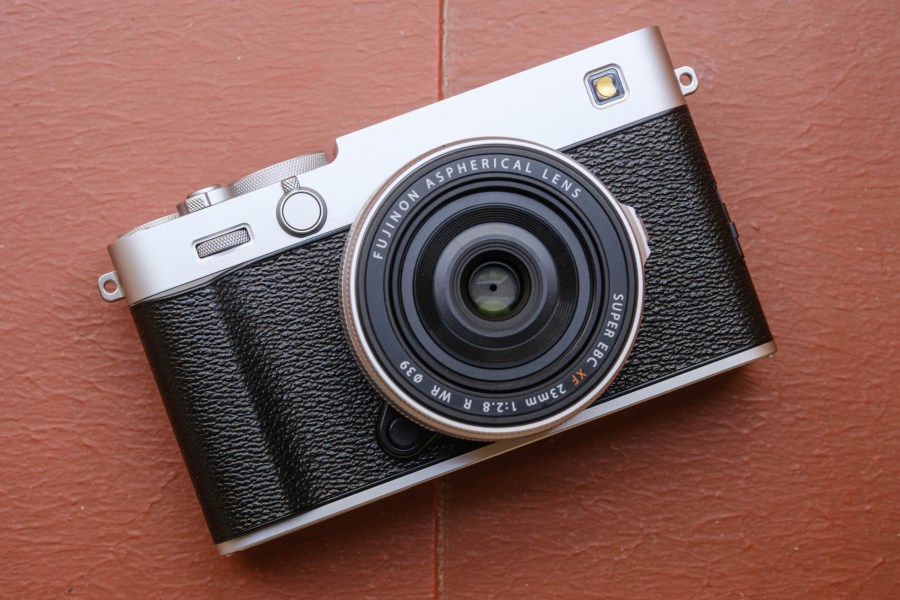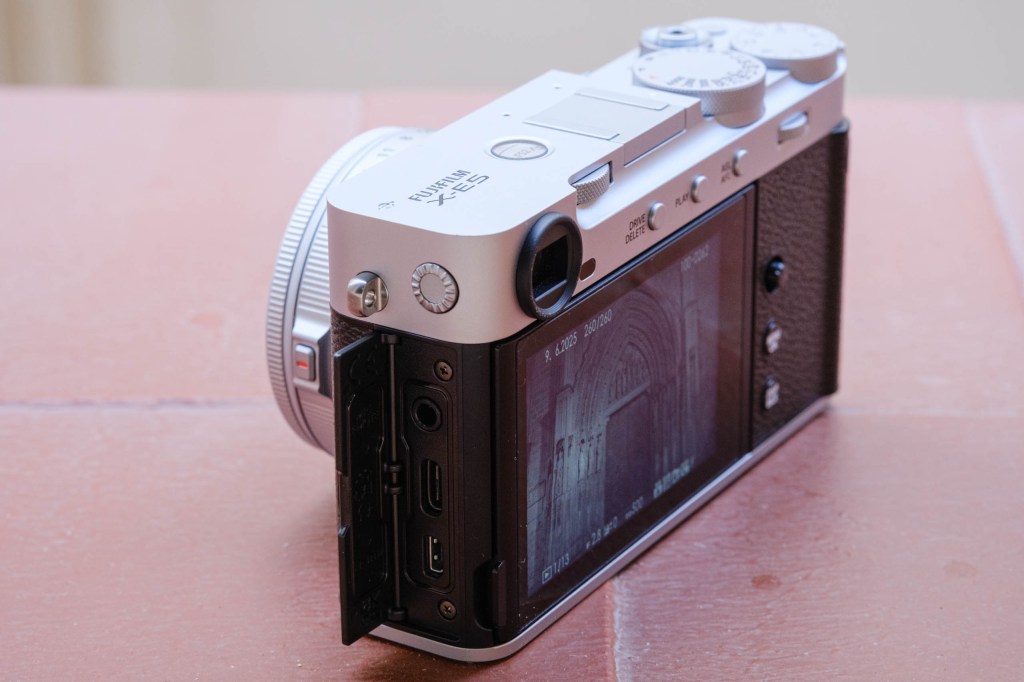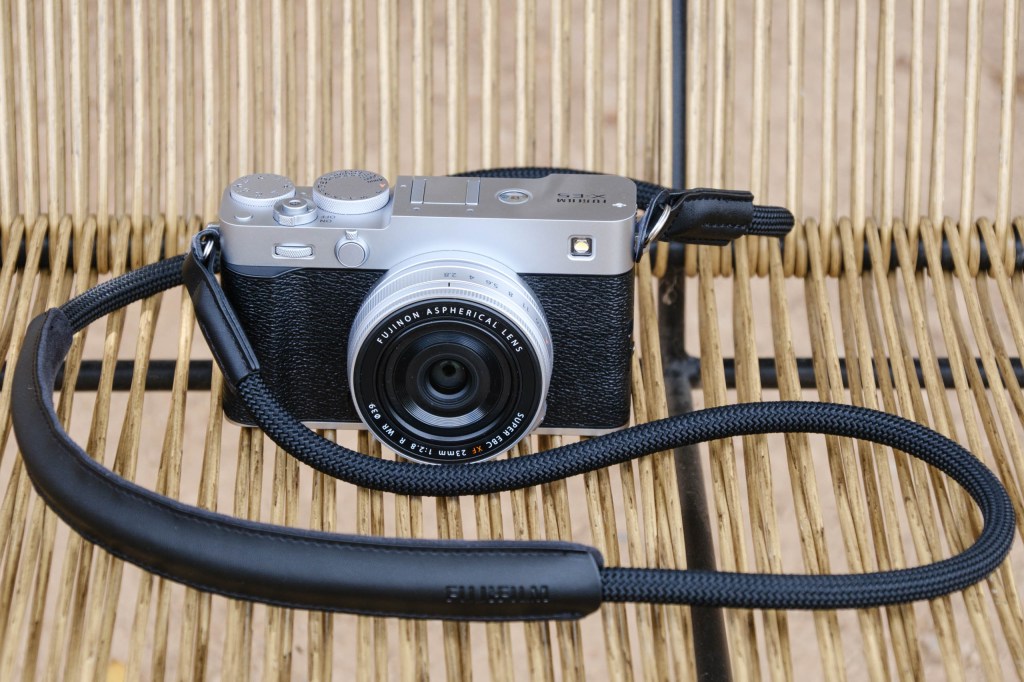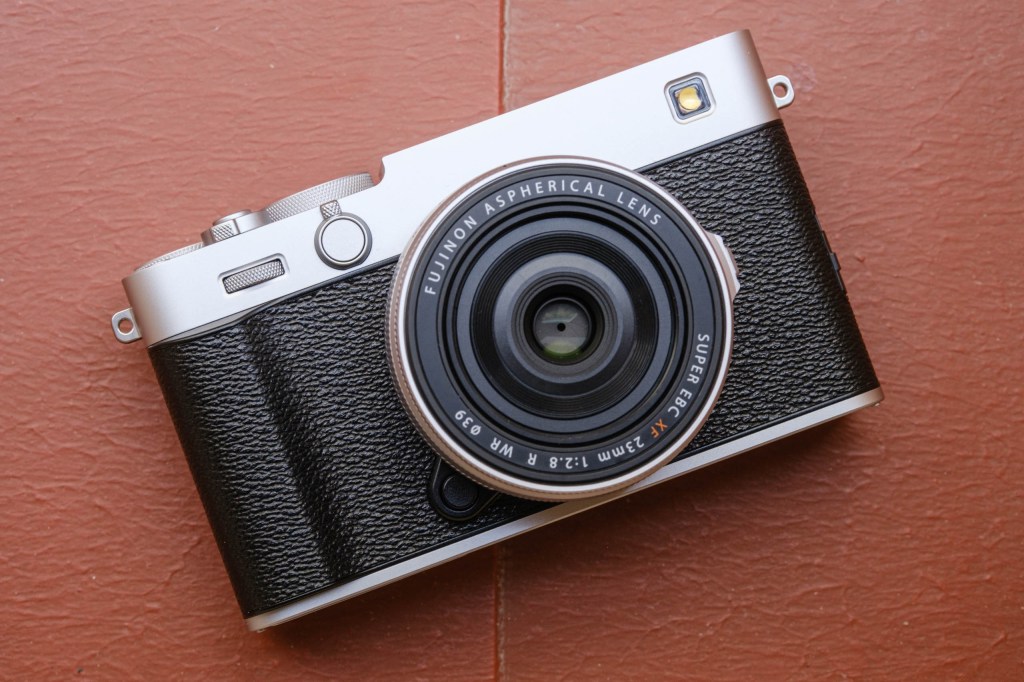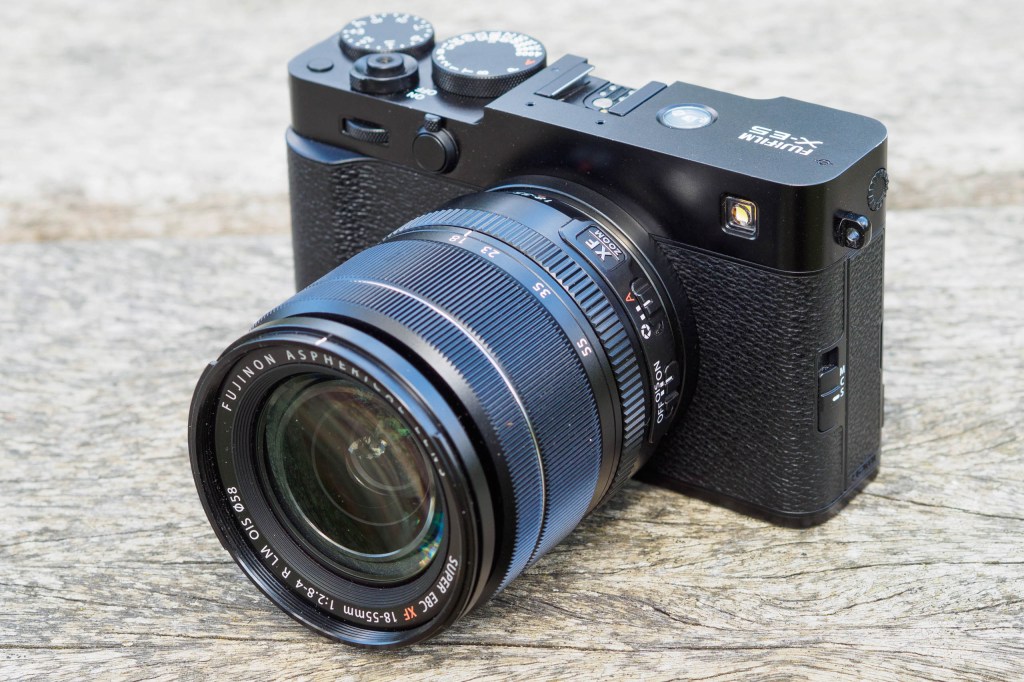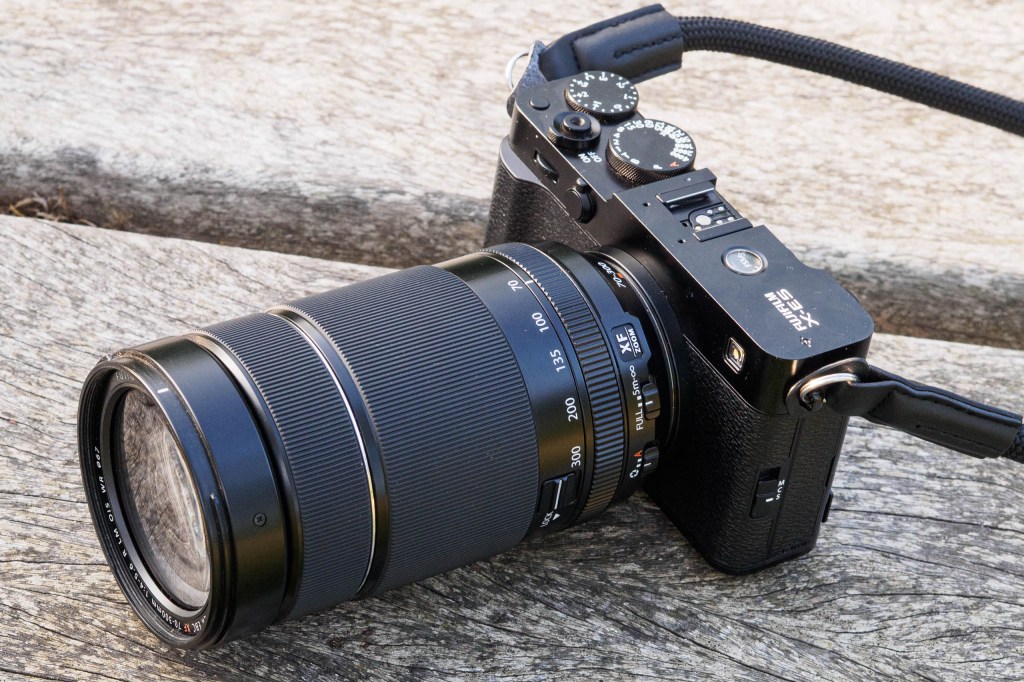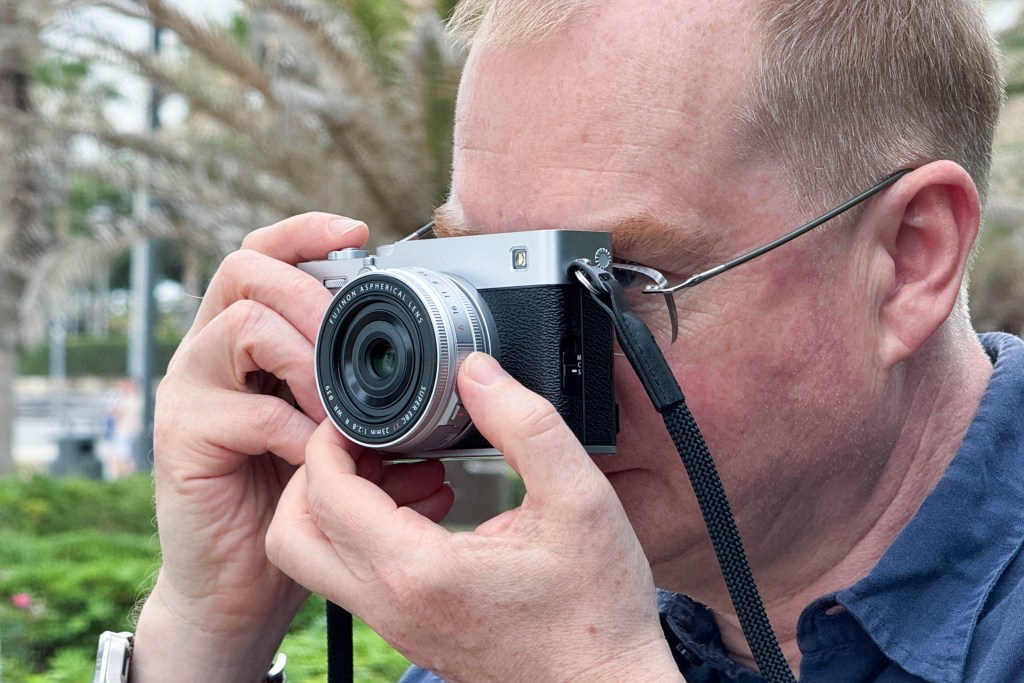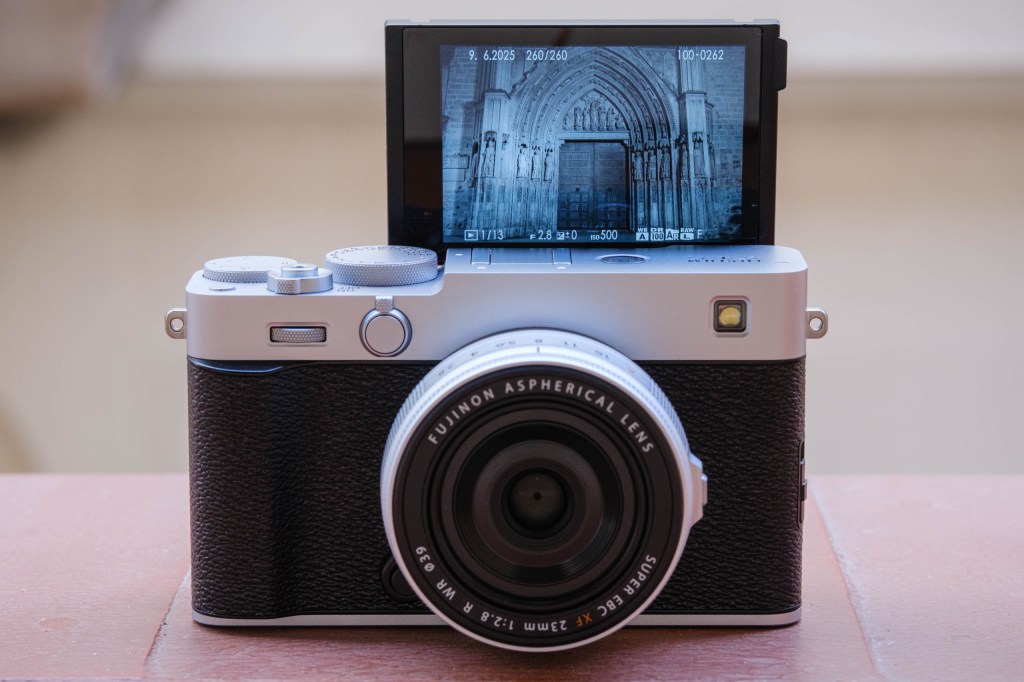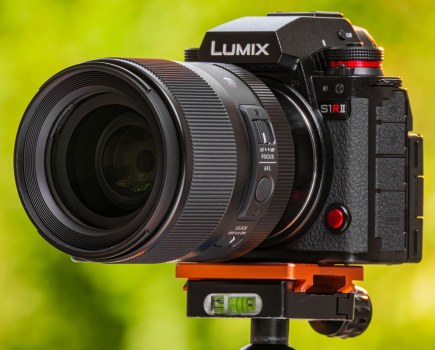Amateur Photographer verdict
The Fujifilm X-E5 is a lovely little camera that that goes a long way to meeting the promise of an ‘interchangeable lens X100VI’. It looks good, is a joy to shoot with, and delivers excellent results.- Small body, but with enthusiast-friendly design
- Engaging analogue controls
- Peerless in-camera colour processing
- Excellent raw image quality
- Easy access to three custom film simulation recipes
- Fairly small viewfinder
- No weather-sealing
- Screen only tilts up and down
The Fujifilm X-E5 is a flat-bodied, rangefinder-style mirrorless camera with a corner-mounted electronic viewfinder. Essentially, it repackages most of the technology of the SLR-shaped X-T50 into a smaller form-factor. In many respects, it can be seen as an interchangeable-lens version of the hugely popular X100VI – to the extent that it comes complete with a new slimline 23mm f/2.8 lens. It’s without doubt one of the best Fujifilm cameras, especially for such things as street, travel and social photography.
Fujifilm X-E5 at a glance:
- $1699 / £1299 body-only
- $1899 / £1549 with 23mm F2.8 kit lens
- ISO 125-12,800 (standard)
- 40.2MP APS-C X-Trans sensor
- Up to 13fps shooting
- 6.2K 30p, 4K 60p, and Full HD 240p video
- 2.36m-dot, 0.62x viewfinder
- 3in, 1.04m-dot tilting touchscreen
- In-body image stabilisation – 7 stops
- Available in silver or black
The X-E5 follows on from the Fujifilm X-E4 which was launched at the start of 2021. It’s fair to say that the X-E4 wasn’t universally well-liked, due to a somewhat over-simplified design and the lack of any real handgrip. It felt like a step backwards compared to previous models in the X-E line.
Now with the X-E5, Fujifilm has addressed these criticisms and reinstated controls that went missing from the X-E4, including a physical AF/MF switch and clickable rear dial. It’s also added a few more goodies in besides, most notably a film simulation mode dial as previously seen on the X-T50 and entry-level X-M5. The result is a very likeable camera indeed with plenty of appeal for enthusiast photographers.

The X-E5 comes in a choice of silver or black finishes, and costs $1699 / £1299 body-only, or $1899 / £1549 with the new, matched 23mm F2.8 kit lens. That’s in the same ball-park as the Sony A6700, which on paper is a similar camera in terms of form-factor and features, but very different when it comes to design and operability. Arguably, anyone contemplating buying the X-E5 will more likely be weighing it up against its siblings, the X-T50 and X100VI, which are also similarly priced. So how does it measure up?
Features
Looking first at the key photographic specifications, these are broadly the same the same as the X-T50 and X100VI. The Fujifilm X-E5 employs the same 40MP APS-C format X-Trans CMOS 5 sensor and X-Processor 5, and notably, it becomes the first model in the X-E series to include in-body image stabilisation.
The sensor provides a sensitivity range of ISO 125-12,800 as standard, which can be extended to ISO 64-51,200 at the expense of reduced highlight range at the lower end, and image noise at high settings. You can shoot at up to 8 frames per second using the mechanical shutter, 13fps using the electronic shutter, or 20fps with a 1.29x crop.
Subject detection autofocus is on board, with settings for animals, birds, cars, motorbikes, airplanes, and trains. With the conventional AF system, you can choose between using 117 or 425 focus points, with a wide variety of focus area sizes on offer.

New to the X-E5 is the ability to specify three Custom AF zones, which can be rectangular groups of AF points of any user-specified size. This feature brings Fujifilm in line with the other camera makers, but it seems a bit odd to introduce it on the X-E5. It’s essentially for sports photography, and almost any other model in the X-system range would be better suited to that.
Fujifilm has included the same miniaturised in-body image stabilisation unit as in the X-T50. This promises up to 7 stops of shake reduction in the centre of the frame when shooting hand-held, and 6 stops in the corners. Yet it brings only a slight increase in body size, with the X-E5 measuring 125mm x 73mm x 39mm and weighing in at 445g without a lens.
Film simulation recipes
As you’d expect Fujifilm has included its full suite of Film Simulation modes, which are set using a physical dial. This has positions for the usual favourites: Provia, Velvia, Astia, Classic Chrome, Reala Ace and Acros. There’s also space for three custom ‘FS’ positions, which come set to Classic Neg, Nostalgic Neg, and Pro Neg Std.

However, the big deal on the X-E5 is you can now save your own favourite Film Simulation ‘recipes’ onto the dial. First you assign the base film simulation you want to use to one of those FS positions, and then customise it via a new, clearly-designed menu section which groups together all the relevant image-processing settings in one place. If you also like to use the base film simulation, then pushing the view mode lever to the left for a couple of seconds temporarily disables all your recipe modifications.
The video below shows how to set up a film simulation recipe on the Fujifilm X-E5.
A big advantage of this approach, compared to other fifth-generation cameras like the X100VI and X-T5, is that when you recall a recipe on the X-E5, you only change those image-processing settings that are directly associated with it. On the other cameras, you have to use ‘Custom Settings’ to save recipes, which include the entire camera setup. This means that you can find yourself changing settings that you didn’t want to.
One slight disappointment, though, is that the film simulation dial’s position directly beside the viewfinder makes it practically impossible to use with the camera up to your eye. There’s no way your right thumb will stretch across, and it’s impractical to use your left hand, either. This is unfortunate, as it’s really useful to be able to see the effect of changing the film mode live in the viewfinder. It’s one area where the X-T50 has an advantage, as its dial is placed on the camera’s left shoulder.
Video features
Video recording is available in 6K 30p, 4K 60p, and Full HD 60p, with a Full HD 240p option also available in high-speed mode without audio. You get a standard 3.5mm stereo microphone input and a micro-HDMI output, and it’s possible to monitor audio via the USB-C port using a suitable adapter.
Video mode is accessed via the drive button, as the last item on a very long list. That’s a pretty strong message from Fujifilm that this really is a camera for shooting stills. It also means photographers can pretty much pretend the video function doesn’t exist, if they want – it never gets in the way.
Connectivity
Like most cameras, the X-E5 has built-in Bluetooth and Wi-Fi for connecting to your smartphone. This works via Fujifilm’s Xapp for Android and iOS, which brings a pretty standard set of features. You can copy photos to your phone for sharing and use your phone either as a basic remote shutter release, or a full remote control. However, the X-E5 does introduce a couple of new features.

Firstly, the camera is capable of printing directly to Fujifilm’s Instax Link line of Bluetooth instant-film printers (currently the Instax Mini Link 3, Instax Square Link, and Instax Link Wide). This update feels long overdue, with the only disappointment being that it doesn’t work with the first-generation Instax Mini Link.
The X-E5 also has a dedicated Bluetooth pairing button recessed into its baseplate. Holding this button down for a second or two initiates the process of connecting to devices for the first time. It’s not something you’ll use often, but I guess it’s nice that it exists.
Fujifilm X-E5 key features:
- Kit lens: The matched XF 23mm F2.8 R WR lens is slim and lightweight, yet retains an aperture ring and weather resistance
- Film dial: The film simulation dial is recessed behind a top-plate window. You can now save your own custom recipes to its three FS positions
- Front lever: A front lever controls the view mode, digital zoom and aspect ratio selection, much like on the medium-format GFX100RF
- Screen: The super-slim screen tilts down, up and forwards, but sits neatly flush to the back of the camera
- Storage: Files are recorded to a single SD card slot which, as on the X-T50, accepts the faster UHS-II type cards.
- Power: The camera is powered by the long-running NP-W126S battery, which charges via the USB-C port and is rated for 400 shots per charge.
Build and handling
My immediate impression on picking up the X-E5 for the first time was that it’s a really nice little camera. In-hand, it feels much like the X100VI, which means it’s rather nicer than its predecessor. A small finger grip on the front and a thumb ridge on the back provide a surprisingly secure hold, with a nice clear space on the back for your thumb.
The build quality feels pretty solid, thanks to a machined aluminium shell top-plate and dials. It’s worth noting, though, that unlike the X100VI, there’s no weather-sealing.
It’s a notably good-looking camera too, with the same kind of sharp, clean lines as the X100VI and GFX100RF. Fujifilm’s decision to move the AF illuminator light in front of the viewfinder gives a front-on view that just looks more ‘right’. An unusually nice rope strap comes in the box, with a sliding suede-backed leather neck/shoulder pad.
When it comes to the control setup, the X-E5 offers a familiar-looking set of analogue dials. A pair on the top-plate control exposure compensation and shutter speed, but unlike the X100VI, you don’t get an ISO dial. Instead, you use the front electronic dial to change this setting.
Most of Fujifilm’s lenses have an aperture ring, as do many third-party optics. But there are also plenty that don’t, including Sigma’s excellent f/1.4 DC DN primes and Viltrox’s affordable ‘Air’ series. In this case, you use the front electronic dial to set the aperture, and click it inwards to toggle between aperture and ISO, which works well once you get used to it.
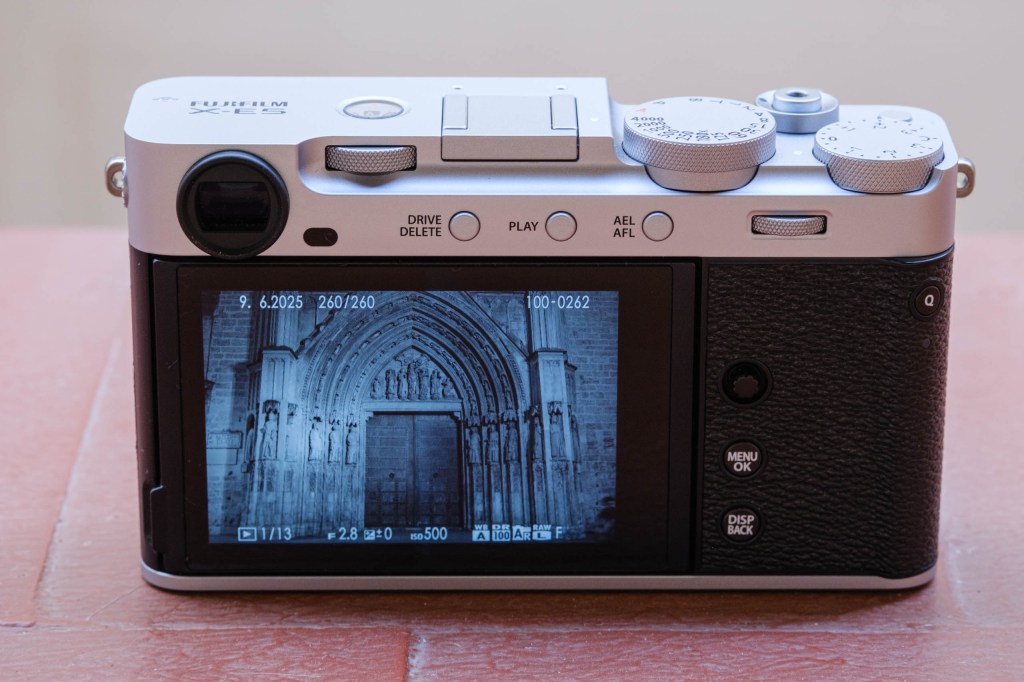
It’s also possible to use the front dial to set the film mode (by setting the film dial to its C position) and even the aperture with lenses that do have their own rings, although this requires changing a slightly obscure menu setting. Personally, I’m not sure why you’d do either, given that those tactile dials are one of the main attractions of Fujifilm cameras in the first place.
Like on the X-E4 before it, the shutter speed dial includes a ‘P’ position for setting the camera to Program auto mode. Presumably the idea is that this is great for non-expert users. But oddly, there’s no auto subject detection mode here that can choose between the possible subject types automatically, unlike the X-T50’s equivalent program mode.
A button on top beside the shutter provides a convenient means of toggling face detection on and off. But in Fujifilm’s usual way, if you had subject detection engaged previously, the camera won’t revert to it when you turn face detection off. I’d like to see Fujifilm fix this behaviour via a firmware update – ideally across its entire lineup.
On the back, there’s a small but effective joystick for positioning the focus point, navigating menus and changing settings. A sliding switch on the side selects between focus modes – single, continuous, and manual.

Fujifilm’s usual Q button is positioned on the corner within easy reach of your thumb, much like on the X100VI, and gives access to the most important secondary camera settings. Overall it’s a highly refined interface that works really well, especially given the camera’s small size.
View mode lever functions
One key addition to the X-E5 is a view mode lever on the front, like those found on several other Fujifilm cameras, including the X100VI and the medium-format Fujifilm GFX100RF. This lever has four functions, depending on the direction you move it, and whether you just flick it or hold it in place for a couple of seconds. Another function is set by a button embedded into the lever. The default functions are as follows:
- Push left: digital zoom, with 1.4x and 2x options.
- Push left and hold: Toggle Film Simulation Recipe on/off (only with the film dial in FS1, FS2 and FS3 positions, and Recipe enabled)
- Pull right: ‘Surround view mode’ for aspect ratio and digital zoom (crop, frameline, or translucent overlay options)
- Pull right and hold: Aspect ratio selection (from 3:2, 16:9, 1:1, 3:3, 5:4)
- Button: cycle through LCD / viewfinder view modes
This set of options makes sense if you see the X-E5 primarily as a vehicle for prime lenses, with digital zoom and aspect ratio selection adding further compositional flexibility. For example, with the 23mm f/2.8 lens, you get 50mm equivalent at 20MP, and 70mm at 10MP (which is still easily enough for detailed 12 x 8in / A4 prints). No matter what digital zoom or aspect ratio you set, you always get full-size raw files, but with cropping information embedded into their metadata.
If you don’t want to use the assigned functions, you can customise them from a wide range of options. I kept the same ones, but swapped digital zoom and surround view mode, as to me it feels more natural to zoom in by pulling (rather than pushing) the lever. I then put aspect ratio onto the front button for easier access.
Overall, I really like how Fujifilm has managed to put five functions under the control of your forefinger like this. The caveat is that the pull-and-hold actions take a frustratingly long time to register, so I relegated them to options I’d only change infrequently. Hopefully this can be fixed in a future firmware update.
The shooting experience
I have to say, I’ve found the X-E5 to be a very pleasant and engaging camera to use – just as you’d expect from an ‘interchangeable lens X100’. All those dials encourage you to immerse yourself in the shooting process, rather than just letting the camera do its thing on Auto. Simply by its presence, the film dial encourages you to experiment with the various colour looks more than you otherwise would.

It’s not necessarily perfect, though, and in particular, I found the controls on the front can be a bit too easy to hit inadvertently. More than once, I found I’d nudged the ISO dial by accident, or switched between viewfinder and LCD viewing modes by pressing the front button (before I re-assigned it). This is especially disconcerting if you manage to select the “EVF only + Eye sensor” mode, because then the camera doesn’t appear to turn on when you flick the power switch.
I spent much of my time shooting with the matched Fujinon XF 23mm F2.8 R WR pancake lens, which fits the camera’s aesthetic perfectly and adds very little to the bulk. Personally, though, I’d probably pair it with the similarly tiny Fujinon XF 27mm F2.8 R WR, as I find the longer focal length gives a more natural look (it’s a bit like having a more upmarket Ricoh GR IIIx, or a mini Leica Q3 43).
Of course, there’s no point in having an “interchangeable lens X100” if you never change the lens. So I also tried the X-E5 with a range of other zooms and primes. Perhaps unsurprisingly, it works especially nicely with relatively small lenses. For example, I found it to be a great match to the classic XF 18-55mm F2.8-4 R LM OIS standard zoom, which means it should also work well with the newer XF 16-50mm F2.8-4.8 R LM WR.
It’s not limited to only working with small lenses, though. I also used it with both the Sigma 16-300mm F3.5-6.7 DC OS all-in-one superzoom and the Fujifilm XF 70-300mm F4-5.6 R LM OIS WR (including with the 1.4x teleconverter), and it worked absolutely fine. You just hold the combination by the lens, that’s all.
Viewfinder and screen
On paper, Fujifilm has used much the same spec electronic viewfinder as all its previous X-E and double-digit X-T models, with a 2.36m-dot OLED panel and 0.62x magnification. That means that it’s one of the smaller viewfinders you’ll find on a mirrorless camera, but even so, it works perfectly well for composing your images. It’s bright enough to be usable on a sunny day and it gives a good impression of how your shots will turn out.
Exposure and colour processing are previewed by default, and when you half-press the shutter button, the lens stops down to the taking aperture, to give depth-of-field preview. You can overlay a live histogram, gridlines, and electronic levels to aid composition.
On the X-E5, Fujifilm has also added a new viewfinder display mode that aims to mimic old film SLRs. This shows the main exposure settings below the preview image in the fashion of a red multi-segment LED display, with a ‘meter needle’ on the right vaguely indicating over or underexposure. Personally I found it downright gimmicky, but I imagine others will like it.
Below the viewfinder is a 3in, 1.02m-dot LCD, which is surprisingly low in resolution compared to the X-T50 and X100VI’s 1.82m-dot screens. However, not only does it tilt up and down, but it can also face forwards over the top of the camera for photographing or videoing yourself, which neither of those cameras can match. However, it’s worth bearing in mind that you can’t really put anything on the hot shoe without blocking most of the screen – so no flash unit, LED light, or microphone.
Autofocus
When it comes to autofocus, the X-E5 works the same way as Fujifilm’s other current cameras. With the conventional AF system, you have a choice between 117 or 425 points arranged across the entire frame, depending on whether you value speed or precision when setting the focus point. There are six different focus-area sizes, plus six zone options for use with moving subjects, three of which are user-customisable. You also get a tracking mode where you specify the subject and the camera will follow it around the frame.

Pressing a button on the top-plate enables or disables face detection, while subject detection is enabled from the Q Menu. Here you can select between Animal, Bird, Automobile, Motorcycle&Bike, Airplane, and Train options. However as there’s no auto option, you always have to tell the camera in advance what you want to focus on. As is Fujifilm’s way, face detection and subject detection are mutually exclusive – enabling one disables the other.
Personally – and presumably because I’m used to it, and have figured out how it works – I find Fujifilm’s AF system works pretty well. With static subjects, it’s every bit as fast and accurate as you’d expect from a modern camera. I also got a respectable hit-rate with moving subjects such as wildlife and trains. However, it’s definitely not as straightforward to use as some other brands, and it’s clear that a lot of users do struggle with it.

To get face or subject detection to work sensibly, you’ll need to remember to set the AF mode slider switch to its C position. You also need to pay close attention to your focus area size and position, as these define where the camera will start looking for subjects.
I generally find it best to use the largest available focus zone, which gives the camera the best chance of acquiring a subject. However if there are multiple possible subjects, and you want to be able to select between them, that may require using a smaller area and moving the focus zone with the joystick.

It’s also worth bearing in mind that if you buy the X-E5 with the XF 23mm F2.8 R WR, that lens really isn’t very fast at focusing at all. This is because it moves the entire optical group back and forth for focusing, unlike larger primes that use small, lightweight internal focusing groups. This is typical of slim ‘pancake’ primes and just a price you pay for their portability.
Performance
The X-E5 is now the fifth model in Fujifilm’s fifth-generation lineup with a 40MP sensor and X-Processor 5, after the X-H2, X-T5, X100VI and X-T50. It’s also, to a great extent, an X-T50 with its parts re-arranged into a smaller form-factor. As a result, it doesn’t bring any surprises in terms of either operational performance or image quality. Which means to say, it’s a very fine camera indeed.

Flick the power switch to the on position, and the X-E5 is ready to shoot in a fraction of a second. It’s pretty discreet too, with a shutter that fires with just a quiet clack. That said, it can’t match the X100VI’s lens shutter, which is, to all intents and purposes, silent.
Fujifilm’s stated battery life of 400 shots per charge seems realistic enough, especially if you’re the kind of person who religiously turns the power off in between shots. At any rate, I never really felt that I was in need of more than one spare, which I’d always recommend getting anyway. Fujifilm has been using this NP-W126 battery for over a decade now, so cheaper but reliable third-party clones are very easy to find if you don’t want to pay full price for an original.

Continuous shooting performance is very respectable, with the camera matching its specified shooting speeds in my tests (8fps with the mechanical shutter, or 13fps with the electronic shutter). It’ll keep going for at least 20 frames when shooting in uncompressed or lossless-compressed raw, and many more than that if you’re happy to switch to compressed raw.
Given that this really isn’t the first form-factor you’d choose for sports and action photography, that feels more than adequate.

Fujifilm’s in-body image stabilisation works very well, too. I found that it’s possible to get entirely usable shots at shutter speeds as slow as a second hand-held, especially if you’re prepared to tolerate a little pixel-level blur (which on a 40MP sensor is entirely reasonable). This can help you keep ISOs down when shooting in low light with subjects where motion blur won’t be a problem.
Image quality
Overall, image quality is essentially indistinguishable from the likes of the X-T5 and X100VI. This means it’s better than any other APS-C camera out there, and in certain respects, it surpasses many full-frame cameras. That 40MP sensor is capable of resolving lots of detail, giving you plenty of scope for printing large or cropping. Plus of course, you get Fujifilm’s unmatched out-of-camera colour rendition, which gives JPEG files that are so attractive that you may not feel the need to shoot and process raw files, at all.

As usual, Fujifilm’s metering is extremely reliable, and the viewfinder gives you a good impression of what you’re going to get. So there’s rarely any need to apply exposure compensation, aside from for creative effect. It’s worth pointing out, though, that if you like to change metering modes frequently, that requires a trip into the menu. Personally, though, I only did this once in all the time I had the camera, to engage spot metering for photographing a full moon.

Auto white balance is consistently well-judged, too. This is really important as not only does this make those camera files look right, it also means that you have the perfect start-point for processing your raw files. Just occasionally I decided to go for a slightly warmer or cooler rendition – but not very often.
Then, of course, there’s those signature Film Simulations. Fujifilm is unique in giving such a wide choice of attractive colour modes, and I’d defy anyone not to find several that they really like. I tend to gravitate to Astia by default, switching to Velvia for extra punch, or Acros for black & white shots.

But honestly, there are so many great options here that you’re spoiled for choice – especially as you can now apply your own favourite Recipes, too. And remember, Film Simulations are not just for JPEGs; if you use Adobe software, you get most of them in raw too.
In fact raw image quality is extremely impressive, too. At low ISOs, you can expect to be able to pull up three of four extra stops of shadow detail without being troubled by noise, and it’s rare that you’ll need more than that. In the example below, I underexposed by about 4 stops to retain detail in the window, then recovered the interior detail in raw processing.
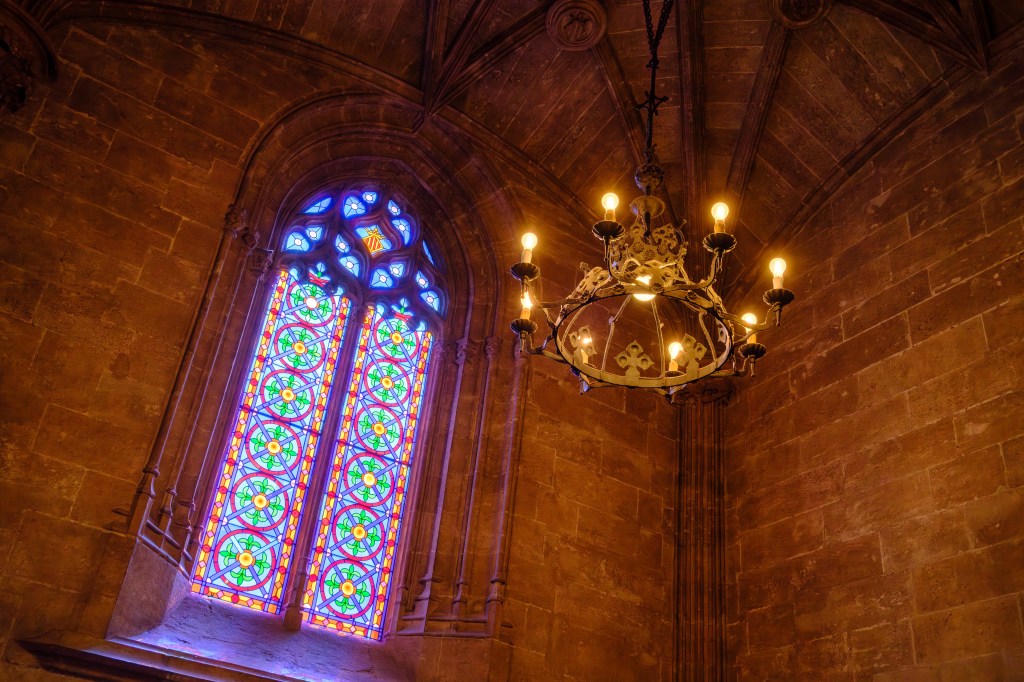
I’m also perfectly happy using this sensor at sensitivities up to ISO 12,800, particularly with the noise reduction tools now available. Ultimately, this is a camera that punches well above its weight in terms of image quality.
Fujifilm X-E5: Our Verdict
The Fujifilm X-E5 is a fabulous little camera that goes a long way to meeting Fujifilm’s promise of an “interchangeable lens X100VI”. Like its fixed-lens sibling it looks great, is a joy to shoot with, and is capable of producing fantastic results. But now, you can use lots of different lenses. What’s not to like about that?
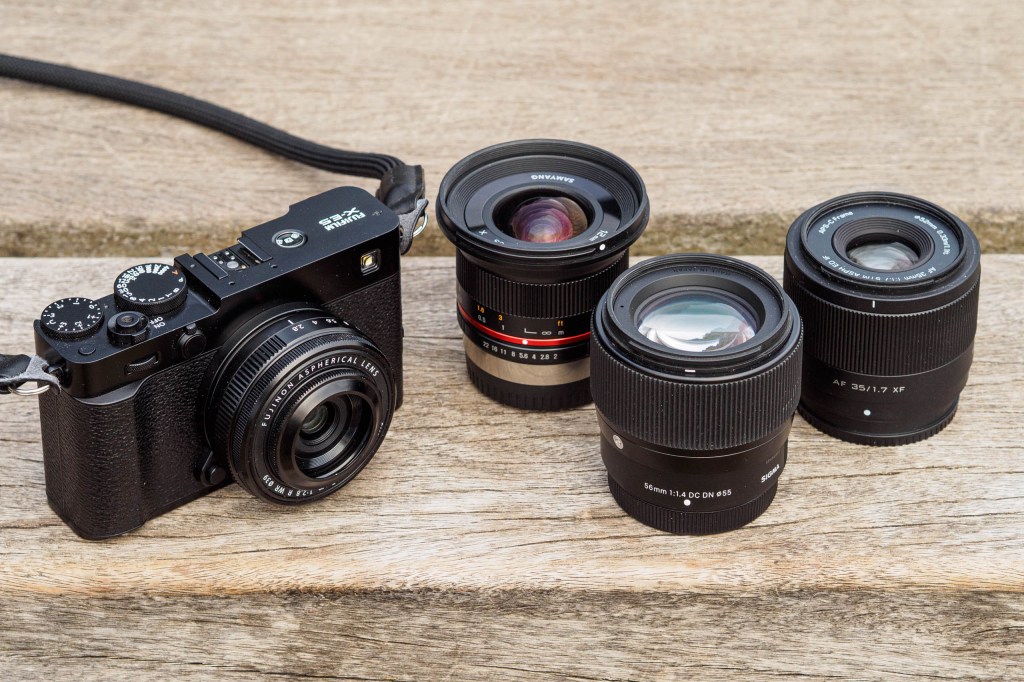
You get all of Fujifilm’s usual attractions, including those lovely tactile dials for changing exposure settings. It’s not often that we see small cameras that are so unashamedly – and successfully – designed for serious photographers. I particularly like the way Fujifilm has managed to fit five functions onto a control that looks like the self-timer lever of a vintage film camera, even if two of them are painfully slow to activate.
Of course, a huge part of Fujifilm’s appeal lies with Film Simulations, and it’s great to see the firm embracing the idea of user-generated recipes. Unlike with using Custom Settings memories on the firm’s other cameras, you don’t risk changing any of your other camera settings at the same time. I’d love to see Fujifilm roll out the same approach across its existing cameras via firmware updates.

While some cameras might only appeal to a niche audience, with the X-E5 I’m left wondering who on earth wouldn’t fall for its charms. It’s perhaps not the best choice for novices looking to work in point-and-shoot mode. But for anyone looking to buy a ‘proper camera’ that’s fully featured yet small and lightweight, it’s an easy recommendation. It would be a particularly fine choice for travel or street photography.
If you’re an existing Fujifilm user who’d like a smaller camera to complement an X-T or X-H, it would be the perfect choice. Likewise it’s a massive update from X-E older models. It could also be the perfect second camera for enthusiast photographers who’d like something smaller than their main kit for family or social events.

Perhaps ironically, though, I would urge caution if you’re thinking of buying the X-E5 and using it exclusively with its 23mm kit lens. Then you end up with a setup that costs about the same as an X100VI, but which is bulkier, isn’t weather sealed, and has a stop-slower lens. Buying an X100VI would be a better choice, assuming you can find one.
In a market dominated by full-frame mirrorless cameras that all look much the same, the X-E5 really is a breath of fresh air. It proves that cameras don’t need to look like an SLR to work really nicely, and don’t need a full-frame sensor to deliver fantastic photos. It’s yet another home run for Fujifilm.

Follow AP on Facebook, X, Instagram, YouTube and TikTok.
Fujifilm X-E5: full specifications
| Sensor | 40MP X-Trans CMOS 5, 23.5mm x 15.7mm (APS-C) |
| Output size | 7728 x 5152 |
| Lens mount | X-mount |
| Shutter speeds | 15min – 1/4000sec (mechanical); 15min – 1/180,000sec electronic |
| Sensitivity | ISO 125-12,800 (standard); ISO 64-51,200 (extended) |
| Exposure modes | PASM, Auto |
| Metering | Multi / Spot / Average / Center Weighted |
| Exposure comp | +/- 5EV in 0.3EV steps |
| Continuous shooting | 8fps (mechanical shutter); 13fps (electronic); 20fps with electronic shutter and 1.29x crop |
| Screen | 3in, 1.04-dot tilting touchscreen |
| Viewfinder | 2.36m-dot, 0.62x OLED EVF |
| AF points | 117 or 425 |
| Video | 6K 30p, 4K 60p, Full HD 240p |
| External mic | 3.5mm stereo |
| Memory card | UHS-II SD |
| Power | NP-W126S Li-ion |
| Battery life | 400 shots |
| Dimensions | 124.9mm x 72.9mm x 39.1mm |
| Weight | 445g (inc battery and memory card) |
UK – Fujifilm X-E5 Featured Deal with Park Cameras

